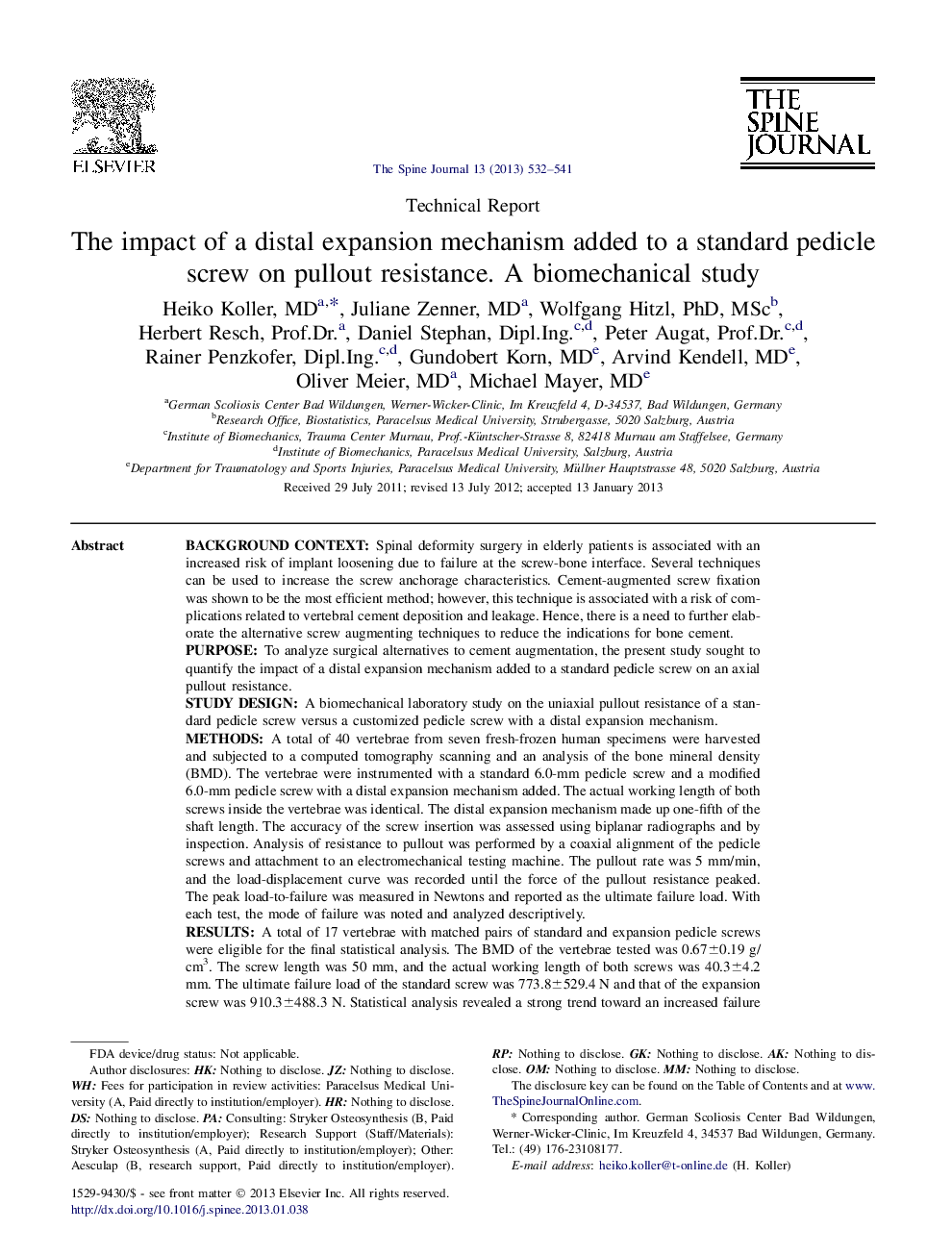| Article ID | Journal | Published Year | Pages | File Type |
|---|---|---|---|---|
| 4097835 | The Spine Journal | 2013 | 10 Pages |
Background contextSpinal deformity surgery in elderly patients is associated with an increased risk of implant loosening due to failure at the screw-bone interface. Several techniques can be used to increase the screw anchorage characteristics. Cement-augmented screw fixation was shown to be the most efficient method; however, this technique is associated with a risk of complications related to vertebral cement deposition and leakage. Hence, there is a need to further elaborate the alternative screw augmenting techniques to reduce the indications for bone cement.PurposeTo analyze surgical alternatives to cement augmentation, the present study sought to quantify the impact of a distal expansion mechanism added to a standard pedicle screw on an axial pullout resistance.Study designA biomechanical laboratory study on the uniaxial pullout resistance of a standard pedicle screw versus a customized pedicle screw with a distal expansion mechanism.MethodsA total of 40 vertebrae from seven fresh-frozen human specimens were harvested and subjected to a computed tomography scanning and an analysis of the bone mineral density (BMD). The vertebrae were instrumented with a standard 6.0-mm pedicle screw and a modified 6.0-mm pedicle screw with a distal expansion mechanism added. The actual working length of both screws inside the vertebrae was identical. The distal expansion mechanism made up one-fifth of the shaft length. The accuracy of the screw insertion was assessed using biplanar radiographs and by inspection. Analysis of resistance to pullout was performed by a coaxial alignment of the pedicle screws and attachment to an electromechanical testing machine. The pullout rate was 5 mm/min, and the load-displacement curve was recorded until the force of the pullout resistance peaked. The peak load-to-failure was measured in Newtons and reported as the ultimate failure load. With each test, the mode of failure was noted and analyzed descriptively.ResultsA total of 17 vertebrae with matched pairs of standard and expansion pedicle screws were eligible for the final statistical analysis. The BMD of the vertebrae tested was 0.67±0.19 g/cm³. The screw length was 50 mm, and the actual working length of both screws was 40.3±4.2 mm. The ultimate failure load of the standard screw was 773.8±529.4 N and that of the expansion screw was 910.3±488.3 N. Statistical analysis revealed a strong trend toward an increased failure load with the expansion screw (p=.06). The mean increase of the ultimate failure load was 136.5±350.4 N. Abrupt vertebral fracture at the vertebral body-pedicle junction and the pedicle occurred seven times with the expansion screw and only five times with the standard screw (p=.16).ConclusionsOur study indicates that adding a distal expansion mechanism to a standard pedicle screw increases the failure load by one-fifth. Modern expansion screws might offer an intermediate solution for the augmentation of screw-rod constructs in osteoporotic bone while reducing the need for cement-augmented screws and avoiding the related risks.
